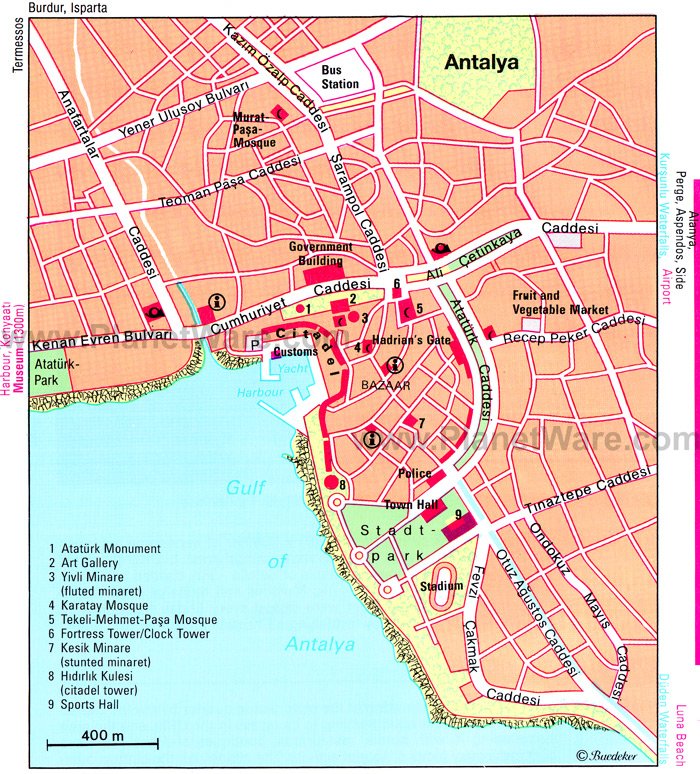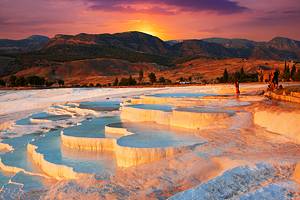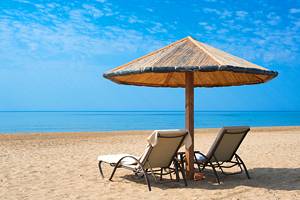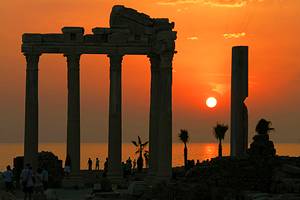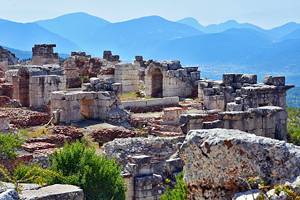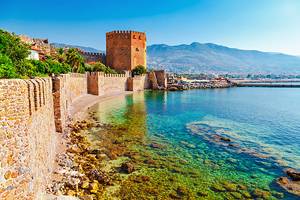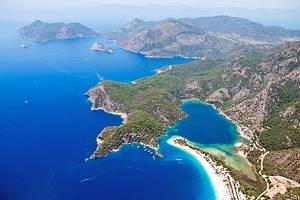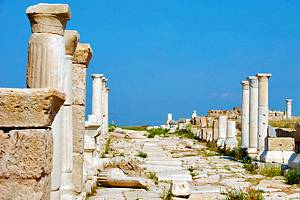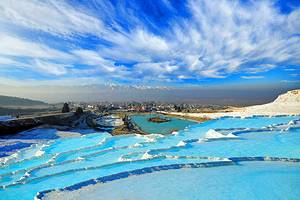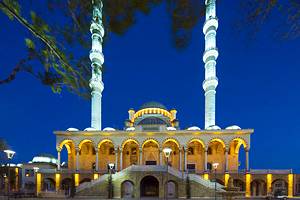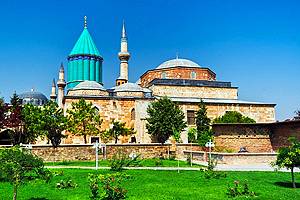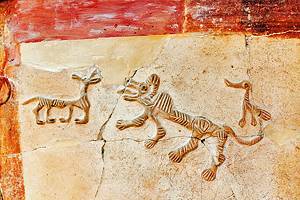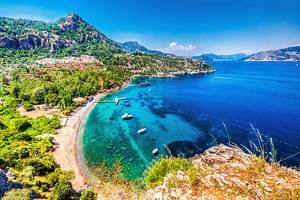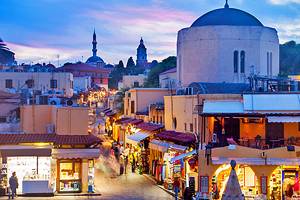Attractions & Things to Do in Antalya
Author Jess Lee has been writing about Turkey's Antalya region for over a decade. She lives in Turkey.
Antalya offers plenty of things to do for everyone. If you want to dose up on sightseeing, Aspendos and Antalya's labyrinthine central old town are among the best places to visit, while the city is perfectly placed to act as your base for day-tripping around the historic tourist attractions scattered across the nearby hills.
For many visitors, though, history doesn't even get a look-in. Antalya instead, is all about the beaches strung along the coast and taking in the Mediterranean coastline vistas on a boat tour.
Whichever type of vacation you're looking for, help plan your trip with our list of the top attractions in Antalya.
- Explore Antalya's Old Town
- Head onto the Mediterranean from the Old Harbor
- Relax on Konyaalti Beach
- Day Trip to Aspendos
- Sunbathe & Swim at Lara Beach
- Scramble around the Ruins of Termessos
- Visit the Antalya Museum
- Admire the Yivli Minare
- Stroll through Hadrian's Gate
- Take in the Views from the Roman Fortress
- White Water Raft in Köprülü Canyon National Park
- Explore the Vast Ancient City of Perge
- Visit Olympos and the Chimaera
- Day Trip to a Lesser Seen Ancient Site at Phaselis
- Visit the Antalya Region's Karst Springs
- Delve into Karain Cave
- Antalya - Climate Chart
Explore Antalya's Old Town
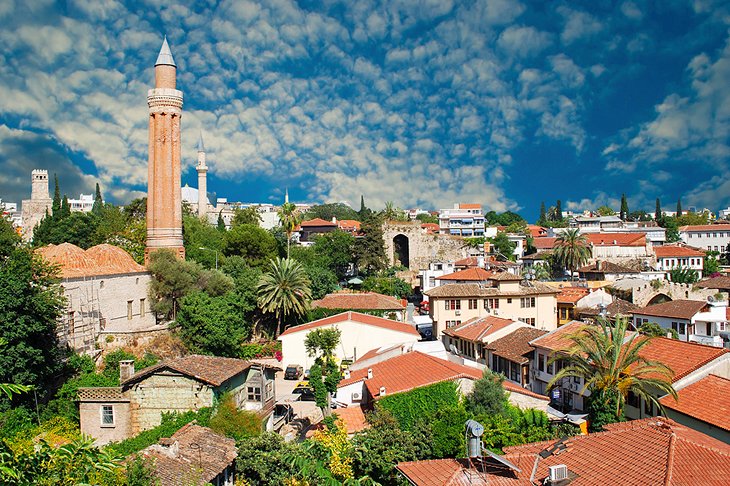
Highlights: Antalya's ancient core with heritage that ranges from Roman to Ottoman
The maze-like Kaleiçi neighborhood was made for strolling.
Perfectly restored whitewashed and red-roofed Ottoman mansions line the cobblestone streets, now home to a plethora of boutique hotels, souvenir shops, art galleries, and restaurants.
Although it's more a place to simply breathe in the old-world ambience, there are also plenty of small tourist attractions for those who want to sightsee.
The main square has a fortress gate and stone-clad clock tower while the 18th-century Tekeli Mehmet Paşa Mosque is worth a look just for its intricate interior tile work.
Along Hesapçi Sokak, you'll find the graceful Kesik Minare (truncated minaret). Destroyed by fire in the 19th century, this is all that is left of a building that started its life as a Roman temple, was converted into a Byzantine church, and finally became a mosque.
Head onto the Mediterranean from the Old Harbor
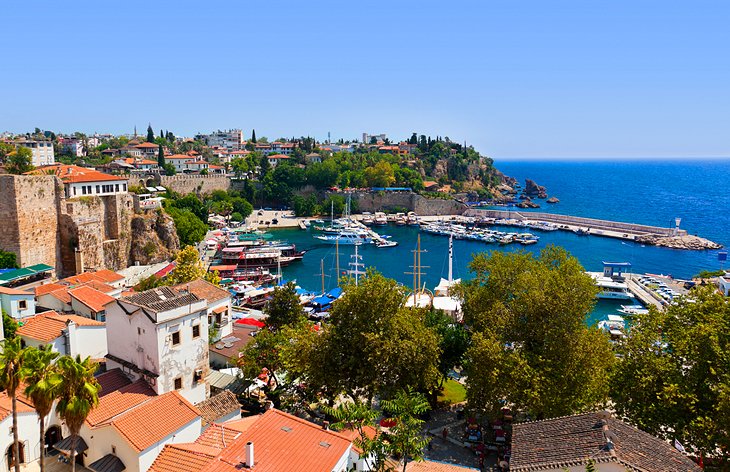
Highlights: Vistas out to the sea from the harbor cafes, and views across the lush coastline from aboard a boat
Nestled into a recess in the cliffs, Antalya's old harbor in the northwest corner of the old town is a picturesque huddle of cafés and restaurants overlooking gently bobbing yachts ready to set out on the Mediterranean.
With its peaceful pleasure-boat atmosphere now, it's difficult to imagine this place was once Antalya's major economic hub, but from the 2nd century up until the mid-20th century, this was the main port, bringing trade and prosperity to the city and surrounding region.
These days, you come here to watch the sun set over the sea while you sip a coffee, or to hop aboard one of the excursion boats for a day tour catered towards soaking up the sun, taking in the lush coastal views, and swimming in the Mediterranean Sea.
Relax on Konyaalti Beach
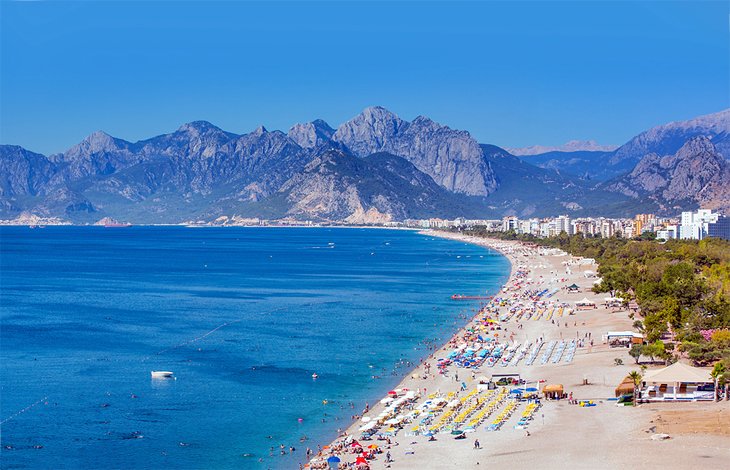
Highlight: Lazy beach day with a dramatic backdrop of mountains
West of Antalya's town center, Konyaalti Beach is one of Antalya's two prime sweeps of sand, with a picturesque backing of mountains rolling down to the coastline beyond.
During summer, this strip (which is more pebbly than sandy) is hugely popular with both local and foreign visitors, and lazy beach days are made simple with plenty of facilities provided.
Sun loungers with umbrellas can be rented, there are good toilet and shower facilities, and the palm tree lined promenade behind the beach is rimmed with snack shops, cafés, and restaurants for when you get peckish.
The beach is easily accessed from town, so it's a very popular beach option with visitors who've chosen to stay in the atmospheric boutique hotel accommodation in Antalya's old town district, as well as visitors at the beach hotels.
Address: Akdeniz Bulvarı
Day Trip to Aspendos
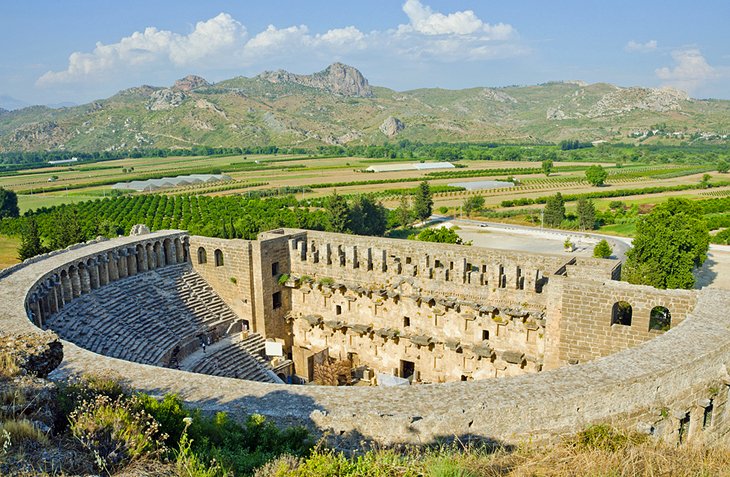
Highlight: Epic, restored Roman theater that is an easy half-day trip from the city
The main reason history buffs visit Antalya is to make the day trip to Aspendos, about 47 kilometers east.
This archaeological site is home to a Roman theater commonly thought to be the best preserved in the world and one of the top tourist attractions in Turkey.
The glory days of this dazzling, ancient town were during the 2nd and 3rd centuries, when most of the ruins that can be seen today were built.
Apart from the theater, which has been fully restored and can seat 15,000 people, much of the rest of the site still lies in ruins and is probably only interesting to the most enthusiastic sightseer.
It includes tours of the Roman ruins of Aspendos and Perge, entrance to Aspendos and the waterfalls (which are near Side), lunch, and pickup and drop-off from your Antalya hotel.
Sunbathe & Swim at Lara Beach
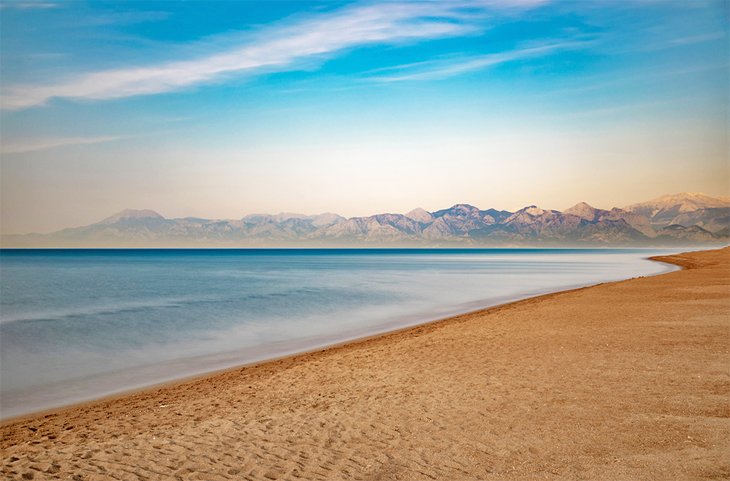
Highlights: Resort living, water sports, and sun-and-sand vacations still within easy reach of town
To the south of Antalya's center, Lara beach is popular for its soft white sand and good family-friendly facilities, backed by cafés and restaurants and with plenty of things to do, from jet-ski rentals to stand up paddleboards for those who want to hit the water.
Sun loungers and umbrellas can be easily rented for those who want to do nothing more strenuous than soak up the sun.
This area is where the vast amount of Antalya's beach resort hotels are located, so for visitors arriving here for a holiday that's all about the sun, sea, and sand, Lara Beach is the main attraction.
Do be aware that during the peak summer months, this beach can get crammed.
Scramble around the Ruins of Termessos

Highlight: Mountain views amid the ruins of this ancient Pisidian stronghold
Aspendos may get all the tourism fame, but Termessos, 34 kilometers northwest of Antalya, beats it hands down for atmosphere.
Neither the Greeks nor the Romans managed to tame the war-like Pisidians, who fiercely protected their independence from the mountain eyrie of Termessos.
The well-preserved remains of this ancient city lie scattered along a rugged hillside with jaw-dropping views across the surrounding countryside.
Wear sturdy shoes and take plenty of water if you want to fully explore this site.
The colonnaded street and upper agora are particularly impressive but don't miss the theater where the vistas across the peaks of the Taurus Mountains are astounding.
Visit the Antalya Museum
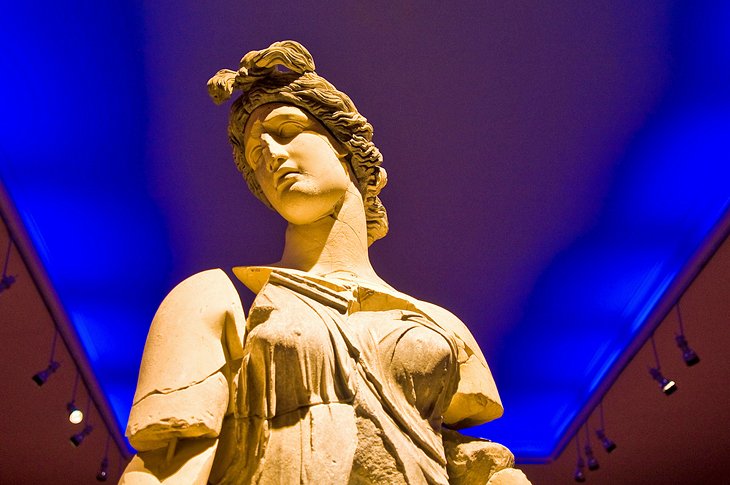
Highlight: One of the finest collections of Classical-era statuary and sarcophagi in Turkey
If you're at all interested in the Classical-era history of this slice of Turkey's coast, don't miss the excellent Antalya Museum.
The dazzling exhibits here showcase all the best finds from all the major excavation sites in the surrounding countryside. Even better, the collection is displayed in exemplary fashion, making the rich (and rather complicated) history of this section of the coast easy to understand.
The large archaeological section offers displays from the Bronze Age to Byzantium, though it's best known for its exhibits of fine statuary created during the Hellenistic and Roman eras of ancient cities such as Perge, Xanthos, and Patara.
Address: Konyaaltı Caddesi 88
Admire the Yivli Minare
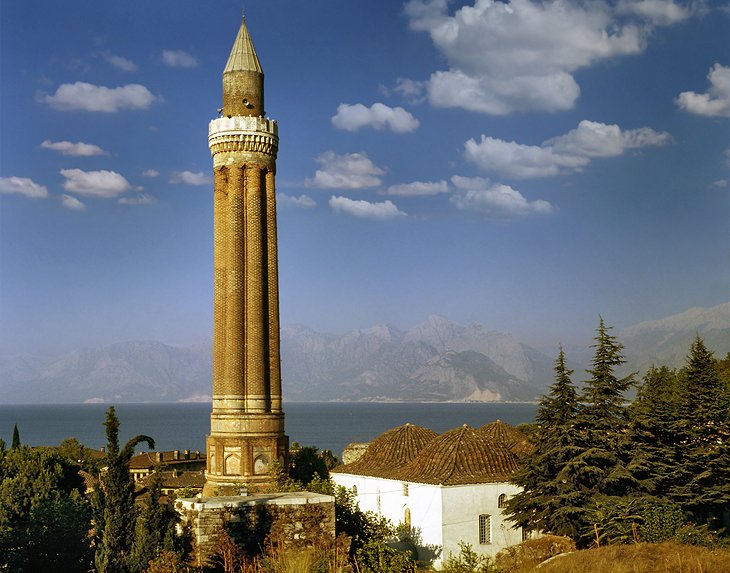
Highlight: Prominent, preserved Seljuk-era minaret
One of Antalya's most distinctive landmarks, and among the old town quarter's many historic monuments, the Yivli Minare (fluted minaret) was built by the Seljuk sultan Alaeddin Keykubad (1219-36).
The minaret is a typical, and extremely well-preserved, example of Seljuk architecture, with a square base surmounted by an octagonal drum bearing the fluted shaft, with its corbelled gallery around the top.
The attached 14th-century mosque is still in use today. The minaret is right beside the Kale entrance gate into the old city.
Opposite the minaret is Antalya's Ottoman-era clock tower, while nearby are some tombs dating from the 14th century.
Address: Cumhuriyet Caddesi
Stroll through Hadrian's Gate
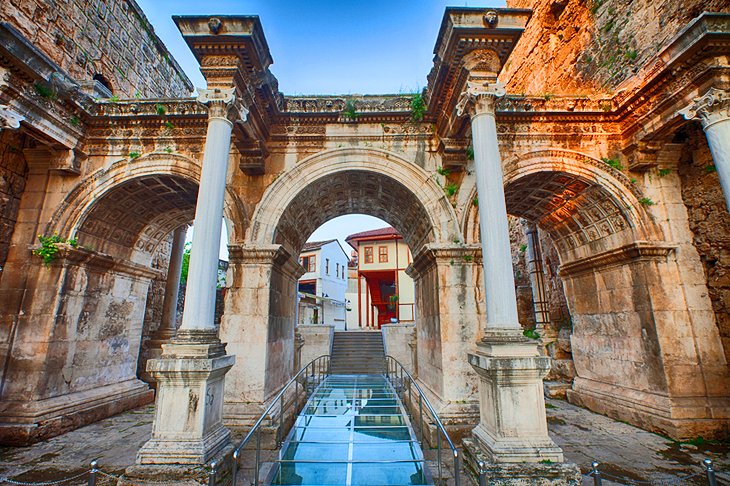
Highlight: Antalya old town's best-preserved Roman remnant
The most dramatic entrance into Antalya's old town district is through Hadrian's Gate (known as Uçkapılar in Turkish), which is the main gateway leading into the old town's eastern section.
Considerable stretches of the Hellenistic and Roman town walls on the eastern side of the old town area have managed to be preserved in partial form, but Hadrian's Gate is the most notable of these sections.
Erected in honor of the CE 130 visit by Emperor Hadrian himself, this grand three-arched marble gateway, flanked by imposing towers, is decorated with rich sculptural decorations.
As you walk through the arches, look up at the ceiling to view the best-preserved carvings.
Address: Atatürk Caddesi
Take in the Views from the Roman Fortress
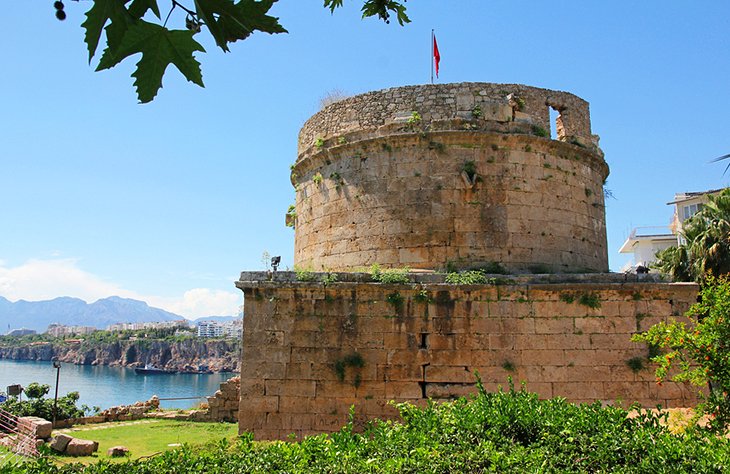
Highlight: Prime spot for swooping vistas across the bay, backdropped by snow-capped mountains
Built in the 2nd century, this squat 14-meter-high cylindrical tower watches over Antalya's old harbor from high above on the edge of Karaalioğlu Park.
No one is quite sure what its main function was, but most agree it acted as a watchtower or lighthouse over the busy port below.
Now it's a fantastic spot to watch the sunset or get that all-important panoramic view over the old harbor area.
The park itself is prime picnicking territory and a tranquil, flower-filled spot to escape the city streets.
Do as the locals do and come here at dusk to promenade. Excellent cafés are also nearby if you need to recuperate after sightseeing.
White Water Raft in Köprülü Canyon National Park
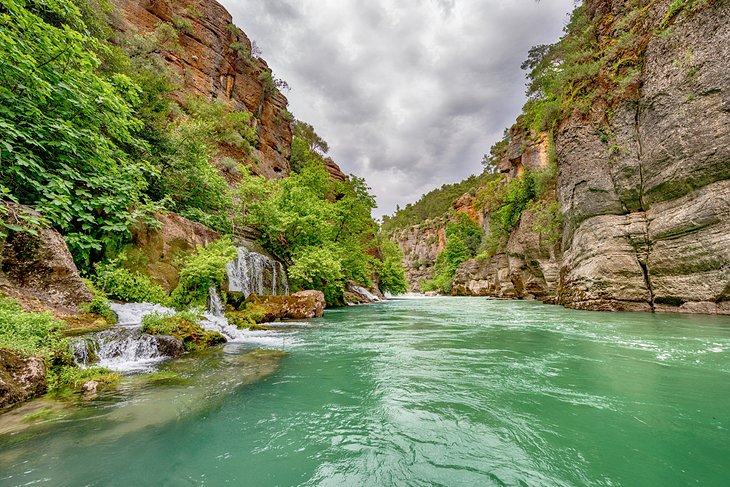
Highlight: Rafting and hiking amid this lush, high-walled canyon
For water fans and anyone after an adrenaline rush, the Köprülü Canyon National Park, 90 kilometers northeast from Antalya, is one of the top day-trip destinations for visitors to the city.
The green-blue water of the Köprülü River snakes through dramatic and craggy high cliffs and has become one of Turkey's most popular places to visit for white water rafting.
Most people head here from Antalya for a half-day rafting tour, though if you want to explore further, the national park also has plenty of hiking opportunities and a scatter of ancient city ruins to see.
If you don't fancy heading onto the water itself, but want to enjoy the canyon's scenery, the main village here has riverside cafés with great canyon views.
Köprülü Canyon National Park is also easily accessed from Side, which is 64 kilometers southeast from the park.
Explore the Vast Ancient City of Perge
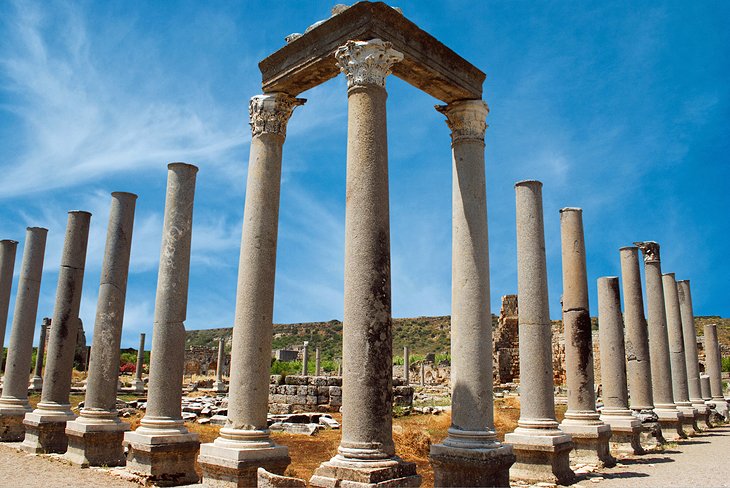
Highlight: Explore the vast, rambling ruins of this once-mighty ancient Pamphylian city
Perge's vast and rubble-filled stadium, half-destroyed temples, and huge colonnaded agora are imbued with an atmosphere of past glory.
This was once the capital of ancient Pamphylia, which blossomed under first Greek and then Roman rule.
The ruins here, about 17 kilometers east of Antalya, are not as famous as others on Turkey's Mediterranean Coast and this also means they attract fewer crowds, leaving visitors able to explore the long colonnaded streets and half-collapsed temples in peace.
The Roman baths, Hellenistic Gate, and the Acropolis area with its sweeping views across the site, are all particularly interesting.
This is the easiest ancient city site to reach from Antalya for independent travelers, as Antalya's tram network now extends all the way out to Aksu, from where you can walk the last two kilometers to the site's entrance gate.
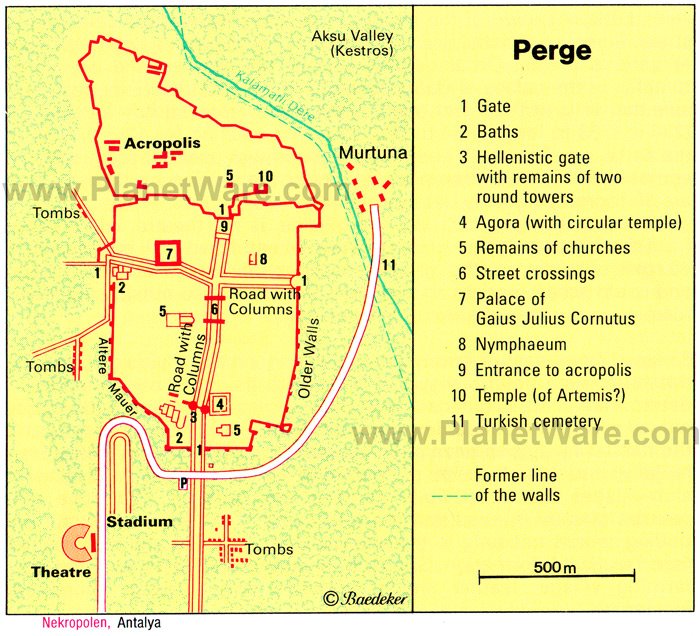
Visit Olympos and the Chimaera

Highlights: A mountain-top eternal flame, ancient ruins, and laid-back beach life
The near-twin villages of Olympos and Çirali, about 84 kilometers southwest of Antalya, sit on a piece of lovely coastline near the overgrown ruins of the ancient Lycian city of Olympos.
As well as the ruins, the famed attraction here is the chimaera, a naturally occurring eternal flame that flickers out of the rocky cliff above.
Olympos is popular with young backpackers and has a reputation for being lively at night, while Çirali is more laid-back and all about chilling out on the beach.
Both are perfect for anyone seeking a beach holiday well away from Turkey's purposely built-up tourist resorts.
Day Trip to a Lesser Seen Ancient Site at Phaselis

Highlight: Getting off the beaten track to discover Antalya's lesser-seen ruins
The old Lycian port of Phaselis, about 60 kilometers southwest of Antalya, is where Alexander the Great set up his winter quarters in 334 BCE.
There are remains of a theater, aqueduct, temples, and colonnaded street to explore, as well as the ancient city's Hadrian's Arch gate, which was erected in CE 114.
The seaside location of the ruins is very pretty, and the small museum on-site displays excavated finds.
If you have time, a couple of kilometers before Phaselis is the Olympos Teleferik (cable car), which journeys up the side of Tahtali Mountain to the summit at 2,275 meters for panoramic vistas over the coast.
Visit the Antalya Region's Karst Springs

Highlight: Take a break from Antalya's rich history with a trip to the Upper Düden waterfalls
The limestone countryside around Antalya is rich in karst springs, sinkholes, and waterfalls.
The lime deposits from these springs have built up over a period of 1.5 to two million years into vast travertine terraces similar to the process that created Turkey's famed terraces at Pamukkale.
Kırkgöz and Pınarbası (just to the northwest of Antalya) have springs and sinkholes to see, but the most famous karst feature in the surrounding area are the Upper Düden waterfalls.
The cascades here, 10 kilometers north from central Antalya tumble down a narrow gorge, beside a viewing platform with a café and picnicking area. A trip here makes a nice nature break from Antalya's glut of historic attractions.
Delve into Karain Cave
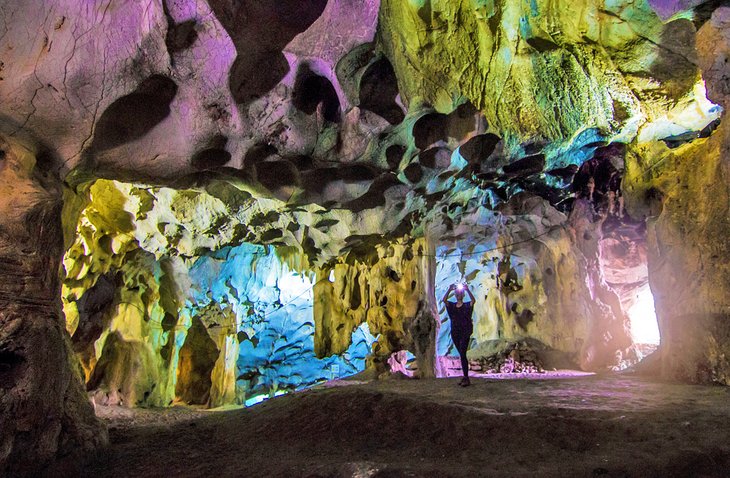
Highlight: Cool off on a hot mid-summer day with a trip deep underground
The Karain Cave, about 27 kilometers northwest of Antalya, near Dösemalti, was inhabited by prehistoric man and has yielded finds from both the Lower and Middle Paleolithic eras.
Excavated finds here include bones and teeth belonging to Neolithic man. Some of the finds are on show in the small but remarkably comprehensive museum on-site.
The wide, arching caverns here are a good opportunity for some easy caving and are very popular with local families having a break from the city.
If you can, try to come on a weekday, when they're less busy. If you have a rental car, the cave and museum combined with the karst springs a little farther north make a good day trip.
Enthusiastic cavers can explore many other caves within day-tripping distance from Antalya.
About 45 kilometers north of the city is the Kocain Cave, which lies hidden deep within the karst mountains of the region. The 600-meter-long cave was first investigated by K. Kökten, whose finds here prove that it was inhabited in prehistoric times.
At the entrance is a huge Roman cistern and also traces of a very early settlement. The cavern here is colossal and boasts some mammoth stalagmites, which have formed into weird and wacky shapes.
Bring along a torch and wear sturdy shoes if you want to explore the cave's interior, as it can get slippery underfoot.
Antalya - Climate Chart
| Average minimum and maximum temperatures for Antalya, Turkey in °C | |||||||||||
| J | F | M | A | M | J | J | A | S | O | N | D |
| 15 6 | 15 6 | 18 8 | 21 11 | 25 15 | 30 19 | 34 22 | 34 22 | 31 19 | 26 15 | 21 11 | 17 8 |
| PlanetWare.com | |||||||||||
| Average monthly precipitation totals for Antalya, Turkey in mm. | |||||||||||
| 239 | 191 | 102 | 48 | 28 | 8 | 5 | 3 | 13 | 71 | 150 | 224 |
| Average minimum and maximum temperatures for Antalya, Turkey in °F | |||||||||||
| J | F | M | A | M | J | J | A | S | O | N | D |
| 58 42 | 59 43 | 64 46 | 70 52 | 77 58 | 86 66 | 92 72 | 92 71 | 87 66 | 79 58 | 69 51 | 61 45 |
| PlanetWare.com | |||||||||||
| Average monthly precipitation totals for Antalya, Turkey in inches. | |||||||||||
| 9.4 | 7.5 | 4.0 | 1.9 | 1.1 | 0.3 | 0.2 | 0.1 | 0.5 | 2.8 | 5.9 | 8.8 |
The best time to visit Antalya is between spring and fall (the months of April, May, June, July, August, September, and October).
April and May are quieter months tourism-wise as beach weather has yet to kick in, but travelers here for the history prefer these months due to the milder temperatures, softer light for photography, and the incredible colorful displays of spring flowers amid the hillside ruins. Daytime temperatures average 17 to 21 degrees Celsius during this period, and you need to expect a day or two of rainy weather. April usually brings an average of eight rainy days.
Temperatures begin shooting up in June and don't relent until mid-October. During peak season (July and August), when both international and local tourists arrive in droves to hit the Antalya region's beaches, temperatures range between 21 and 34 degrees and average out at 29 degrees, with the long summer days bringing reliable sunshine, blue skies, and humidity.
Once the school vacation period finishes at the start of September, the beaches and major sights get less crowded but the good weather continues. It's only in October that you need to pack a warmer layer for after dark and plan for some rainy weather again.
More Related Articles on PlanetWare.com
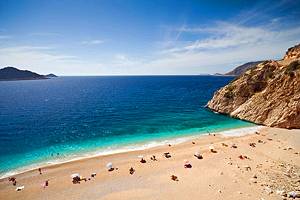
In the Region: Antalya is a great base from which to hit the road and explore the coastline. To the south, within day-tripping distance, is Side with its bundle of Roman ruins and beaches. To the north, head to the pretty village of Kas, surrounded by beautiful Mediterranean coastline.
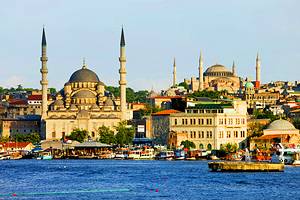
More Cities: Antalya is one of Turkey's biggest cities. For more city life, Istanbul is Turkey's buzziest and most cosmopolitan, while Konya is home to plenty of historic buildings as in the home of the Whirling Dervishes.
